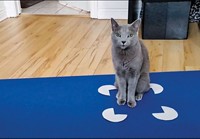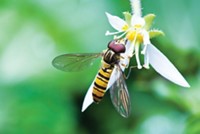Advertisement
Grab your lab coat. Let's get started
Welcome!
Welcome!
Create an account below to get 6 C&EN articles per month, receive newsletters and more - all free.
It seems this is your first time logging in online. Please enter the following information to continue.
As an ACS member you automatically get access to this site. All we need is few more details to create your reading experience.
Not you? Sign in with a different account.
Not you? Sign in with a different account.
ERROR 1
ERROR 1
ERROR 2
ERROR 2
ERROR 2
ERROR 2
ERROR 2
Password and Confirm password must match.
If you have an ACS member number, please enter it here so we can link this account to your membership. (optional)
ERROR 2
ACS values your privacy. By submitting your information, you are gaining access to C&EN and subscribing to our weekly newsletter. We use the information you provide to make your reading experience better, and we will never sell your data to third party members.
Environment
Newscripts
Sashaying Pigs, Enormous Buckyballs
by Jeff Huber
July 16, 2012
| A version of this story appeared in
Volume 90, Issue 29
As anyone who saw Miss Piggy’s appearance as a judge on the TV show “Project Runway: All Stars” earlier this year can attest, pigs have style. So much so, the porkers are strutting their stuff as part of a Ph.D. project being conducted by graduate student Sophia Stavrakakis at Newcastle University, in England.
Stavrakakis is gathering data that correlate a female breeding pig’s gait to its likelihood of eventually becoming lame. Such metrics could help farmers pinpoint at-risk swine in need of preventive care, thereby minimizing costly livestock fatalities.
The study combines the pig science expertise of Newcastle University’s School of Agriculture, Food & Rural Development with the engineering know-how of its School of Mechanical & Systems Engineering.
To prep swine for this study, Stavrakakis’ teammate Mark Brett, a former zookeeper at ZSL London Zoo, trained a group of pigs to walk in front of a three-dimensional motion-capture camera system that measures the length of a pig’s stride as well as the angles exhibited by its elbows and knees. During training, Brett placed a stick with a red ball at its end in front of a pig. The pig then touched the ball with its nose, received an apple treat, and continued following the ball as Brett paraded the pig in front of the cameras. “We trained them to follow a guiding tool, like dogs basically,” Stavrakakis tells Newscripts. “They picked it up quite quickly.”

Gently leading the pigs at a set pace ensures consistency among the data being collected over the course of the pigs’ lives. Documentation of how the gaits of female breeding pigs change as they grow older and gain weight will be a useful benchmarking tool for farmers, Stavrakakis says, and might facilitate the development of video-based technology for screening pigs and flagging those more likely to experience problematic health in the future.
It’s an effort that Stavrakakis’ snout-nosed friends have been more than happy to, ahem, ham it up for. “Some of them were really enjoying the walking,” Stavrakakis laughs.
For us humans looking for a good excuse to take a stroll of our own this fall and winter, Madison Square Park has just the attraction: a giant buckyball sculpture. The 30-foot-tall representation of C60will be on display at the New York City park from Oct. 25 until sometime in February 2013.

Commissioned by Madison Square Park Conservancy’s public art program, the massive structure is the work of artist Leo Villareal, the man behind such impressive light sculptures as “Multiverse,” which connects the east and west wings of the National Gallery of Art in Washington, D.C. Much like “Multiverse,” Villareal’s soon-to-be-installed “Buckyball” makes extensive use of light-emitting diodes. One hundred and eighty LED tubes line the pentagon- and hexagon-shaped sides of his piece’s two fullerenes, which have been placed one inside the other. Pixels within the LEDs bathe the structure in waves of as many as 16 million distinct colors.
“A full-scale sculptural installation that moves, changes, and interacts, this work ultimately grows into a complex, dynamic form that questions common notions of space, time, and sensorial pleasure,” a press release for the sculpture proudly proclaims. Although Newscripts remains skeptical about the kind of existential quandaries Villareal’s “Buckyball” may throw us into, we do agree that the epic size of the installation is enough to make us wonder if, at least during the coming fall and winter, the Big Apple should instead be called the Big Buckyball.
Jeff Huber wrote this week’s column. Please send comments and suggestions to newscripts@acs.org.





Join the conversation
Contact the reporter
Submit a Letter to the Editor for publication
Engage with us on Twitter